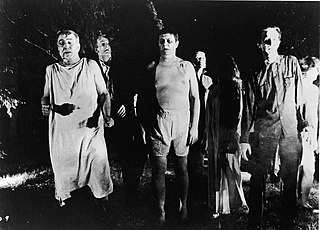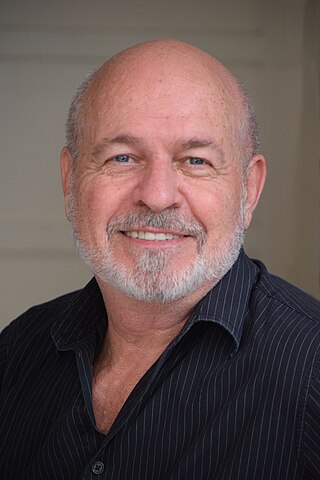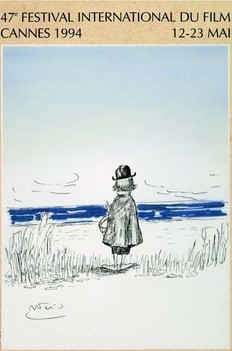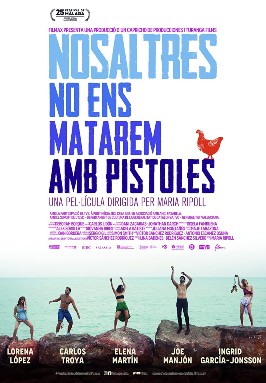Related Research Articles

Mexican cinema dates to the late nineteenth century during the rule of President Porfirio Díaz. Seeing a demonstration of short films in 1896, Díaz immediately saw the importance of documenting his presidency in order to present an ideal image of it. With the outbreak of the Mexican Revolution in 1910, Mexican and foreign makers of silent films seized the opportunity to document its leaders and events. From 1915 onward, Mexican cinema focused on narrative film.

A low-budget film or low-budget movie is a motion picture shot with little to no funding from a major film studio or private investor.
Miguel Coyula Aquino is a Cuban filmmaker and writer. Working with a multi-disciplinary approach, his films usually take several years to complete. He has been described by critics as a virtuoso and an innovator. The multi-layered narratives of his films often deal with alienation, they contain graphic depictions of sexuality, and frontal criticism of society and politicians. The controversial nature of his work has resulted in the banning of his work in Cuba, although it has also suffered censorship in Argentina, Belarus, Morocco, and Beirut. The press usually refers to him as the enfant terrible of Cuban Cinema.

While the Peruvian film industry has not been nearly as prolific as that of some other Latin American countries, such as Mexico or Argentina, some Peruvian movies produced enjoyed regional success. Historically, the cinema of Peru began in Iquitos in 1932 by Antonio Wong Rengifo because of the rubber boom and the intense arrival of foreigners with technology to the city, and thus continued an extensive, unique filmography, with a different style than the films made in the capital, Lima.

Enrique Graf is a Uruguayan-American pianist.

The 47th Cannes Film Festival took place from 12 to 23 May 1994. American filmmaker and actor Clint Eastwood served as jury president for the main competition. French actress Jeanne Moreau hosted the opening and closing ceremonies.

The 49th Cannes Film Festival took place from 9 to 20 May 1996. American filmmaker Francis Ford Coppola served as jury president for the main competition. Sabine Azéma hosted the opening and closing ceremonies.

The 39th Cannes Film Festival took place from 8 to 19 May 1986. American filmmaker Sydney Pollack served as jury president for the main competition. British filmmaker Roland Joffé won the Palme d'Or, the festival's top prize, for the drama film The Mission.

Chilean cinema refers to all films produced in Chile or made by Chileans. It had its origins at the start of the 20th century with the first Chilean film screening in 1902 and the first Chilean feature film appearing in 1910. The oldest surviving feature is El Húsar de la Muerte (1925), and the last silent film was Patrullas de Avanzada (1931). The Chilean film industry struggled in the late 1940s and in the 1950s, despite some box-office successes such as El Diamante de Maharajá. The 1960s saw the development of the "New Chilean Cinema", with films like Three Sad Tigers (1968), Jackal of Nahueltoro (1969) and Valparaíso mi amor (1969). After the 1973 military coup, film production was low, with many filmmakers working in exile. It increased after the end of the Pinochet regime in 1989, with occasional critical and/or popular successes such as Johnny cien pesos (1993), Historias de Fútbol (1997) and Gringuito (1998).
Juan Carlos Cremata Malberti is a Cuban film director. He started his career as an author and actor for children's TV shows made for the Cuban Institute of Radio and Television from 1981 to 1987. He is known for directing the movie Viva Cuba, which received the Best Children's Film award at the Cannes International Film Festival in 2005.

Secret of the Andes is a 1998 Argentine-American fantasy adventure film co-written and directed by Alejandro Azzano. It stars Roshan Seth as a powerful shaman, Camilla Belle as a nine-year old young girl with unusual gifts, David Keith as her archaeologist father, Nancy Allen as her mother and John Rhys-Davies as a Catholic priest.

Strawberry and Chocolate is a 1993 internationally co-produced film, directed by Cuban filmmakers Tomás Gutiérrez Alea and Juan Carlos Tabío, based on the short story "The wolf, the forest and the new man". Senel Paz had written the short story in 1990, and also wrote the screenplay for the film. It was the first Cuban film to be nominated for an Academy Award.

The Lusca Fantastic Film Fest is an annual film festival held in Puerto Rico. It is the first and only international fantastic film festival in the Caribbean devoted to sci-fi, thriller, fantasy, dark humor, bizarre, horror, anime, adventure, virtual reality and animation in short and feature films. The event is held in San Juan, Puerto Rico metropolitan area, and other venues throughout the island of Puerto Rico. It runs for eight days during two weeks during October and November. Its main objective is to promote cinematographic art by presenting high-quality short and feature films.
Nobody Dies Here is a 2016 French documentary short film directed by Simon Panay. The film has been presented as World Premiere to the 20th Rhode Island International Film Festival where it won the First Jury Prize for Best Documentary.

Chameleon is a 2016 Chilean psychological thriller film written and directed by Jorge Riquelme Serrano. It had its world premiere at the 2016 BFI London Film Festival where it was selected to compete for the Sutherland Award.
CutOut Fest is an international animation and digital arts festival held every November in Querétaro, México. The festival previews short-form animated works, including narrative films, experimental films, advertising spots, title sequences, music videos and GIFs. CutOut Fest is Mexico's largest festival celebrating non-traditional filmmaking. Besides the main competition, the festival includes other events in the program like artist panels, workshops, and installations. The festival's "objective is to promote the development of the animation and digital arts industries in Mexico as a free forum for international dissemination" The logo of the festival is the View Master and the tagline is "new ways to see". The admission to the entire festival is free of cost as long as the attendee registers beforehand. The main sponsors of the festival are government agencies that promote cultural activities in Mexico including Querétaro Esta En Nostros, Secretaria de Cultural, Museo de La Ciudad, and Cineteca Rosalio Solana.

Coralie Fargeat is a French filmmaker. She gained recognition with her 2017 debut feature film Revenge, for which she received awards from several independent film festivals. This was followed by her second feature, The Substance (2024), a satirical body horror film starring Demi Moore, which won her the Cannes Film Festival Award for Best Screenplay.

Venus is a 2022 Spanish supernatural action horror thriller film directed by Jaume Balagueró from a screenplay by Balagueró and Fernando Navarro, loosely inspired by H. P. Lovecraft's short story "The Dreams in the Witch House". It stars Ester Expósito.

One for All is a 2020 Spanish drama film directed by David Ilundain which stars David Verdaguer alongside Patricia López Arnaiz, Ana Labordeta, and Clara Segura.

We Won't Kill Each Other with Guns is a 2022 Spanish comedy-drama film directed by Maria Ripoll which stars Lorena López, Carlos Troya, Elena Martín, Joe Manjón, and Ingrid García-Jonsson.
References
- ↑ Jacob Bañuelos Capistrán y Carlos Saldaña (2017): "The one minute film: festivals and contents of an audiovisual genre", en Miguel Hernández Communication Journal, no8, pp. 231 to 266. Universidad Miguel Hernández, UMH (Elche-Alicante).
- ↑ "BBC - One-Minute Movies - How to... Story". www.bbc.co.uk.
- ↑ How to make one minute film seai.ie/
- ↑ The one minute film as a continuous cinematographic practice. by Carlos Ignacio Trioni Bellone, Artilugio Magazine pp44 2015
- ↑ El cineminuto como práctica cinematográfica continua
- ↑ Trioni Bellone, C. I. (2016). The One-Minute film: Revisiting a story (El cineminuto: Reconstrucción de una historia). TOMA UNO, (4), 227–236. https://doi.org/10.55442/tomauno.n4.2015.10594
- ↑ "About Us". filminute.com.
- ↑ "Gotta Minute Film Festival 2022". fava.ca.
- ↑ "1-Minute Film Competition". 1-Minute Film Competition.
- ↑ "** One Minute Story Film Festival **". oneminutestoryfilmfestival.com.
- ↑ "One Minute | Home". www.oneminute.ch.
- ↑ "Quickie Fest: The One Minute Movie Festival". FilmFreeway.
- ↑ "cineminutocordoba". cineminutocordoba.
- ↑ "Festival Internacional de Cineminuto". Festival Internacional de Cineminuto.